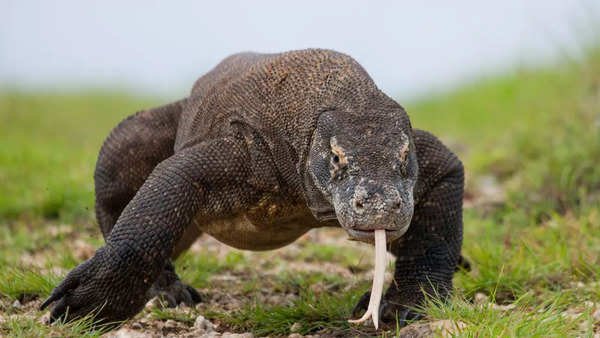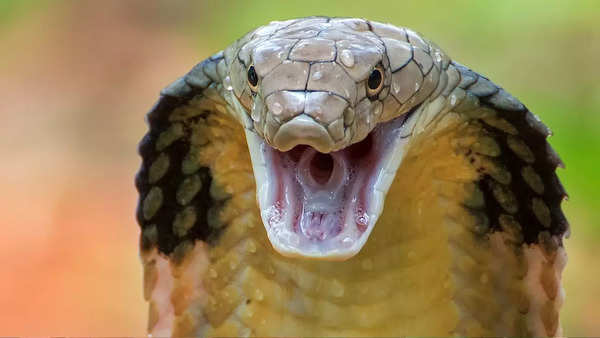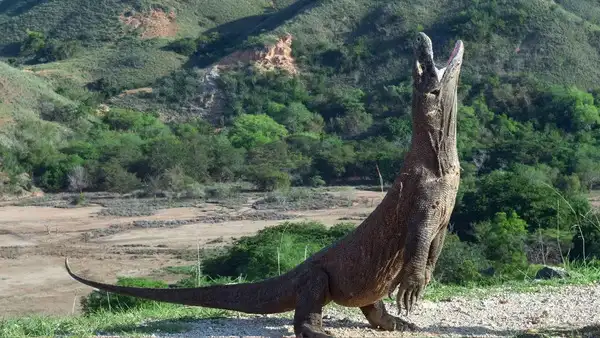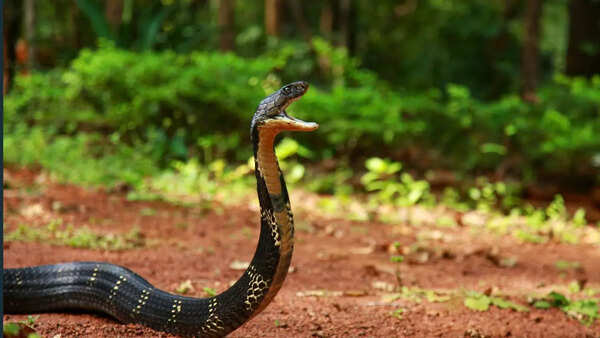Komodo dragon vs King Cobra: Which is more dangerous

One among these is a colossal lizard from ancient times, the Komodo dragon, which lumbers across Indonesia’s sun-scorched islands like a living dinosaur. The other is the King cobra, which glides through the shadows of Asian jungles, and its hooded head is a warning sign to all who dare cross its path.
While they don’t naturally encounter each other often in the wild, their mythical perceptions have always drawn comparisons. Both of these creatures have been feared yet respected for centuries. They were worshipped in ancient cultures and taken into countless legends. The two interesting animals are also top predators in their respective domains, where one rules the land with crushing jaws, and the other has mastered the art of the venomous bite
But what if these predators cross the human path? Which one would pose a greater threat? Questions like these have always boggled people. Here are some factors on the basis of which we can decide which of the two predators is more dangerous.

On the basis of size and physical power
The Komodo dragon easily wins the size contest. These reptiles can grow up to 10 feet long and weigh over 150 pounds. Their muscular bodies are long, and they also have powerful tails, which make them physically imposing. In contrast, the King cobra, while it is the largest venomous snake in the world, maxes out at around 18 feet in length but weighs far less, which is typically under 20 pounds. When it comes to sheer brute strength, the Komodo dragon dominates.
Who is more lethal between the two?
In this aspect, the King Cobra is definitely a winner! It possesses a neurotoxic venom capable of killing an adult human in under 30 minutes. The cobra’s bite is extremely lethal. It delivers up to 400–600 mg of venom in one bite, which is mostly enough to take down an elephant. The Komodo dragon, on the other hand, has mildly venomous saliva and relies more on its bite’s deep, tearing wounds and the bacteria in its mouth to weaken prey over time.

Based on hunting strategy?
King cobras are highly strategic hunters. They are highly secretive and track down their prey with precision, often ambushing other snakes or small mammals. Their ability to “stand” upright and flare their hood can intimidate larger animals. Komodo dragons are more opportunistic as they stalk and then charge their prey. Relying on physical strength and patience, they can follow a wounded animal for miles. So both of these predators stand equal in this factor.

Who has better defence mechanisms and survival skills?
Komodo dragons are heavily armored with tough, scaly skin. Their size makes them less vulnerable to attack. They can survive severe injuries, including fights with other dragons. King cobras, while being agile and intimidating, are more fragile in a physical confrontation. One good tail slap or bite from a dragon could seriously harm them.
Who is more dangerous to humans ?
Both animals are dangerous, but in different ways. Komodo dragons have attacked humans, and their bites can be fatal if not treated quickly. However, attacks are rare. King cobras tend to avoid humans but defend themselves fiercely when provoked, and their venom makes them far more immediately lethal to a person.

So, who’s more dangerous? If it comes down to raw power and survival instincts, the Komodo dragon definitely holds the edge. But talking about precision, deadly efficiency, and pure venom fear factor, the King cobra isn’t something one would ever want to mess with. At the end of the day, nature doesn’t play favourites, danger can show up in all kinds of forms. And sometimes, it’s the quietest creature that delivers the deadliest strike.





